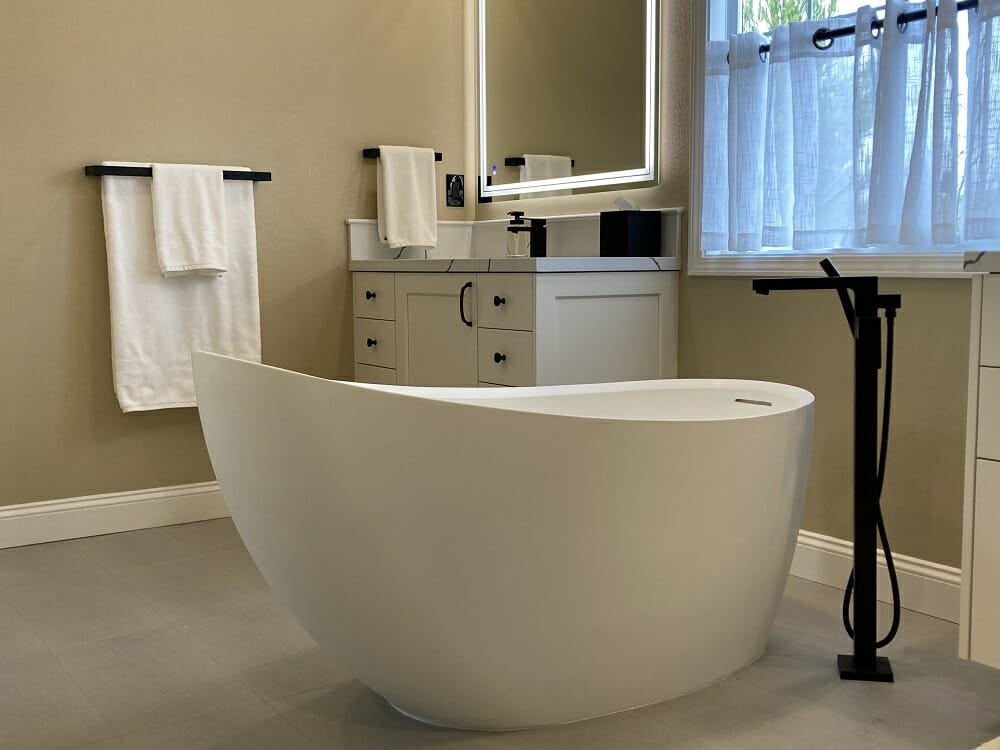Yes, they do!
It is standard in builder-grade bathrooms that use acrylic tubs to have an overflow inside the tub – an overflow helps stop the bathtub from overflowing and flooding the bathroom. Sometimes, when customers switch to a higher-end tub, they’re confused to not see an overflow.
The only T&L bathtub that comes standard without an overflow (and can’t have one added in), is the Romantique Bathtub. Because of its stunning curves, there is simply nowhere for the overflow to fit!

Any of our bathtubs can be made with or without an overflow, depending on your preferences. But no, bathtubs don’t necessarily need to have overflows.
What Does a Bathtub Overflow Do?
Maybe you’ve started to run the bath, then just ran to get a quick glass of water… Suddenly your spouse has questions, your kids need help, and the dog needs to go outside. Before you know it, you’ve left your bathwater running for too long and accidentally flooded the whole bathroom! This is a very possible scenario if your bathtub doesn’t have an overflow.
The purpose of a bathtub overflow is to drain water from an over-filled bathtub to keep it from overflowing.
There are various looks that a bathtub overflow can have, from an interior to exterior, or subtle to stand-out. However, T&L bathtubs all feature discreet internal overflows. These are the best options for functionality without sacrificing any of our bathtubs’ beauty. Our overflows are slits in the walls of the tub – which allow overflowing water to run down the cavity wall of the bathtub, and out the bottom of the drain into your drain pipes.
You can see the two different (internal or external) bathtub overflows below. And while it’s ultimately up to personal preference which you will choose – you can’t go wrong with a discreet overflow in your tub to keep your bathroom dry and your bathtub beautiful!

Is An Overflow Required on a Bathtub?
Overflows are mostly optional on bathtubs. Uniform plumbing codes do not enforce bathtub overflows because of the many different styles of tubs and rooms – however, some local housing codes may require your bathtub to have an overflow. It’s always best to check with your codes and associations before purchasing a tub without an overflow.
The best way to keep your bathtub from overflowing, even if your tub has an overflow, is to watch the bath while it fills and turn your water off before it overflows.
Oftentimes, bathtubs placed outdoors won’t have overflows, since there isn’t any flooring to worry about if the tub were to overflow. Additionally, sometimes wet room bathtubs don’t have overflows since the floor is already fully waterproof, and there’s floor drains built-in.
Whether or not your bathtub has an overflow, is fully your decision!
Ready to create the bathroom of our dreams? Shop T & L Bathtubs HERE
